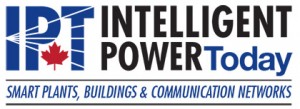Safeguarding Critical Infrastructure from Power Grid Transients
Overvoltage protection is essential for maintaining the integrity and reliability of critical infrastructure, particularly power grids. Voltage Limiting Devices (VLDs) play a pivotal role in protecting these systems from voltage spikes and transients that can cause extensive damage. This article explores the significance of overvoltage protection, its benefits, and the key considerations for effective implementation in power grid applications.
Importance of Overvoltage Protection in Power Grids
Power grids are complex networks that deliver electricity from producers to consumers. They are susceptible to various disturbances, including lightning strikes, switching surges, and fault conditions, which can lead to overvoltage transients. Without adequate protection, these transients can damage electrical equipment, leading to costly repairs, service interruptions, and even catastrophic grid failures.
Protecting Equipment and Reducing Outages
Equipment Safety: Overvoltage protection devices prevent the excessive voltage from reaching sensitive equipment, thus safeguarding it from damage.
System Reliability: By limiting transients, VLDs contribute to the overall reliability of the power grid, reducing the frequency and duration of power outages.
Benefits of Voltage Limiting Devices
VLDs offer several benefits that make them indispensable in modern power systems.
Immediate Response to Voltage Spikes
Fast Acting: VLDs respond almost instantaneously to overvoltages, clamping them to safe levels and preventing damage to the network.
Diverse Applications: They are effective in various settings, from residential and commercial to industrial and utility-scale power systems.
Enhanced System Stability
Preventing Cascading Failures: By isolating overvoltages locally, VLDs prevent them from propagating through the system, thereby avoiding cascading failures that can lead to widespread blackouts.
Key Considerations for VLD Implementation
Successful overvoltage protection requires careful consideration of several factors to ensure that VLDs are both effective and efficient.
Correct Specification and Sizing
System Requirements: Selecting VLDs based on the specific voltage levels and transient characteristics of the power grid is crucial to ensure they perform as needed.
Integration with Existing Infrastructure: VLDs must be compatible with the existing power grid components to function seamlessly within the system.
Maintenance and Monitoring
Regular Testing: Ensuring VLDs are operational through regular testing and maintenance is vital for continuous protection.
Advanced Monitoring: With the advent of smart technologies, VLDs can now be monitored remotely, providing real-time data on their status and performance.
Future Directions in Overvoltage Protection
Technological advancements are continuously enhancing the capabilities of VLDs, making them more effective and easier to integrate into existing systems.
Integration with Smart Grid Technologies
Real-time Analytics: The integration of VLDs with smart grid technologies allows for real-time analytics and predictive maintenance, further enhancing grid reliability and performance.
Automated Control Systems: Advanced VLDs can be integrated with automated control systems, enabling dynamic responses to changing grid conditions and improving operational efficiency.
Voltage Limiting Devices are crucial for safeguarding critical infrastructure against power grid transients. Their ability to provide fast, reliable overvoltage protection is indispensable for maintaining the safety, reliability, and efficiency of electrical systems. As technology evolves, the integration of smart features and advanced monitoring capabilities will continue to enhance the performance and functionality of VLDs, ensuring they remain at the forefront of overvoltage protection in power grid applications.
